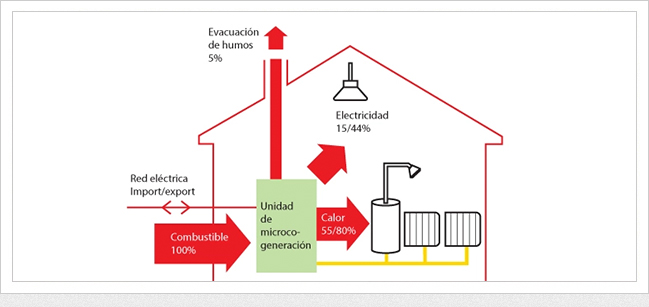Cogeneration is a type of technology that allows generating electricity and thermal energy at the same time. It is a very efficient system that makes the most of the residual heat that is produced during the electricity generation process and that would otherwise be wasted.
Cogeneration is a fairly common system in industrial processes that require the use of large amounts of heat or steam (and even cold). However, this technology It is not yet widespread in the domestic sphere, although it would be very useful because electricity and thermal energy are some of the most common needs in a home.
How does microcogeneration work?
Microcogeneration (domestic cogeneration) is a technology that produces electrical and thermal energy simultaneously.
Its operation is based on the rotation movement of an axis by means of a motor, which through an alternator coupled to said shaft generates electric power. At the same time, one obtains thermal energy from the exhaust gases and engine cooling water. Both heat sources are recovered to convert all possible thermal energy into hot water and use it for heating or domestic hot water.
In the event that we wanted to produce cold, we would be talking about microtrigeneration. To do this, additional machinery called an absorption machine would be needed, capable of transforming heat into cold. For example, a hot-cold underfloor heating installation would be an ideal combination with this system.
The main difference between a traditional boiler and cogeneration technology is that the fumes from the former are expelled at very high temperatures directly to the outside, while the smoke produced in the second is cooled before leaving and uses the residual heat in other processes.
Why is it so efficient?
The high efficiency of microcogeneration is due to the fact that it is a system that simultaneously produces electricity and heat energy. If we also choose to consume electrical energy in the same place where it is generated, we could avoid transportation losses which usually occur when energy is consumed from the electrical grid.
Another point in favor of microcogeneration is that it could be considered a renewable energy system according to fuel type that we use for its operation. This would not be a problem because there are already many pieces of equipment that use, for example, biomass.
In short, microcogeneration would not only help us cover the energy needs of our house, but we would also be respecting the environment.
Fuente: Father



